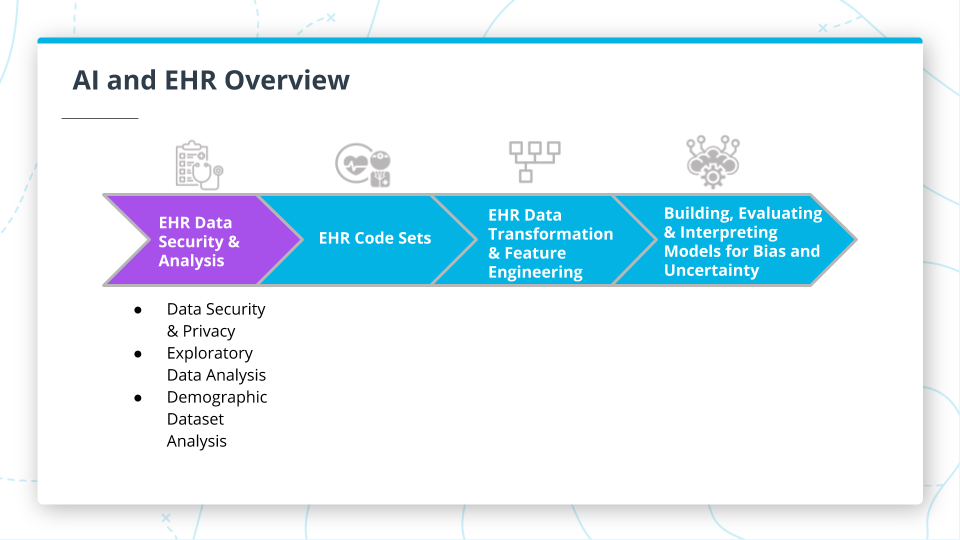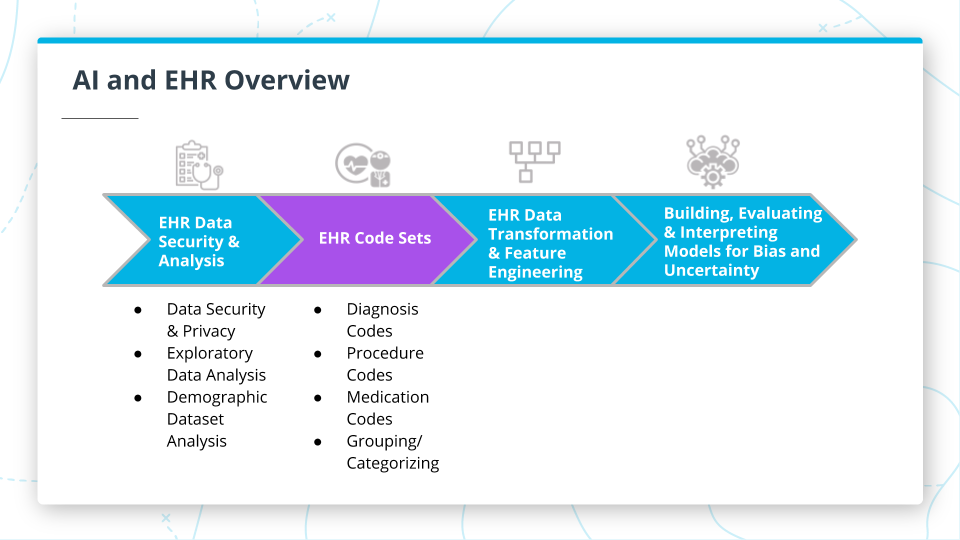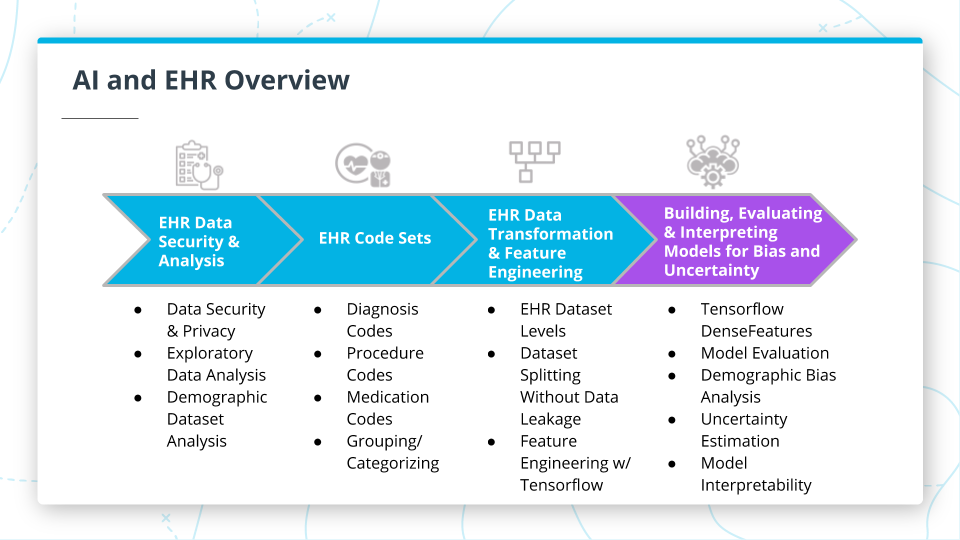04. AI and EHR Course Preview
AI and EHR Course Preview
ND320 AIHCND C01 L00 A04 What Are The Sub-Topics That Lessons Are Organized Around- V2
CRISP-DM
CRISP-DM is an acronym for Cross-industry standard process for data mining. It is an open standard process model that describes conventional methods that can be used in the data mining project. Major phases of CRISP-DM are - Business Understanding, Data Understanding, Data Preparation, Modeling, Evaluation, and Deployment. Later in the course, we will learn to perform exploratory data analysis (EDA) based on the CRISP-DM framework/model.
Course Overview
Now that you have a little background into AI and EHR data, let's get a preview of what we will cover in this course.

EHR Data Security & Analysis
EHR Data Security & Analysis
In the initial parts of this course, we will be reviewing EHR Data security and Analysis.
This Data Security section of the course may be a review for anyone who currently works in healthcare, but it is of vital importance in today's world to understand how to keep our patients' data safe and secure. We are the gatekeepers of that data and if we want to be able to do amazing things with this data, we need to ensure it's safe. Of course, these rules also protect medical professionals as well.
You will learn about the different regulations around the world which you should be aware of to ensure your data practices meet these regulations. You'll also learn who generally takes care of making sure your data is compliant before it even gets to you.
We will be reviewing and completing some exploratory data analysis following the CRISP-DM framework to address some common issues with data before we begin using it to build and test our models. You will perform some data schema and demographic analysis as part of the section. This will enable you to explore your data and make sure it is representative of the population and that will allow the model you build later to be accurate.

EHR Code Sets
EHR Code Sets
In the EHR Code Sets section of this course, you will learn about all kinds of different code sets used in the medical industry.
You'll become familiar with medical Encounters and learn to interpret Diagnosis, Procedure, and Medication codes.
Diagnosis codes are part of the ICD10-CM classification of diseases.
Then you'll learn to break down procedure codes using CD10 PCS codes and CPT categories.
Finally, we will look into using the Clinical Classifications Software or (CCS) system to more easily group and categorize these 77K+ codes when using them for our ML models.

EHR Data Transformation and Feature Engineering
EHR Data Transformation and Feature Engineering
First, you'll learn to differentiate between and choose the correct Dataset level for your modeling by choosing between line, Encounter and Longitudinal levels.
Then you'll learn to apply testing and validation techniques to prevent data leakage and population misrepresentation during dataset splitting, which, if left unchecked, can lead to highly inaccurate models in production. And finally, you perform feature engineering use the TensorFlow Dataset API.
Then it's time to get to the really fun part, Building, Evaluating and interpreting models!

Building, Evaluating & Interpreting Models
Building, Evaluating & Interpreting Models
In the last part of the course, it's time to get to the really fun part, Building, Evaluating and interpreting models!
You'll start off by getting a quick review of TensorFlow DenseFeatures and implementing best practices with TF Feature columns.
Next, you'll evaluate your models for Uncertainty and Bias while being introduced to Brier Scores for evaluation.
After that, we'll head into a deep dive into demographic bias analysis of our models to remove bias. Not only will you understand why unintended demographic bias is so important to address, but also how to address unintended biases using a project called Aequitas.
Then, you'll get a review of uncertainty estimation and Bayesian probability before Training an Uncertainty Estimation Model with TF Probability.
Finally, we'll use Shapely values to help interpret your model.
Wow, looking at this course, it might seem like a lot, but by the time you have finished, you will have gains some amazing skills you can put to use in the ever-growing and important industry of healthcare!